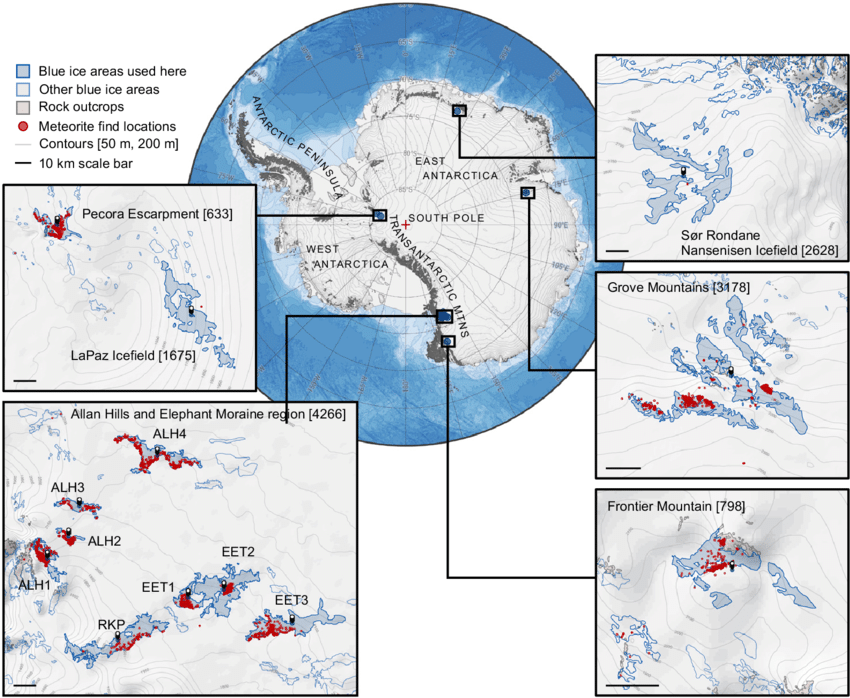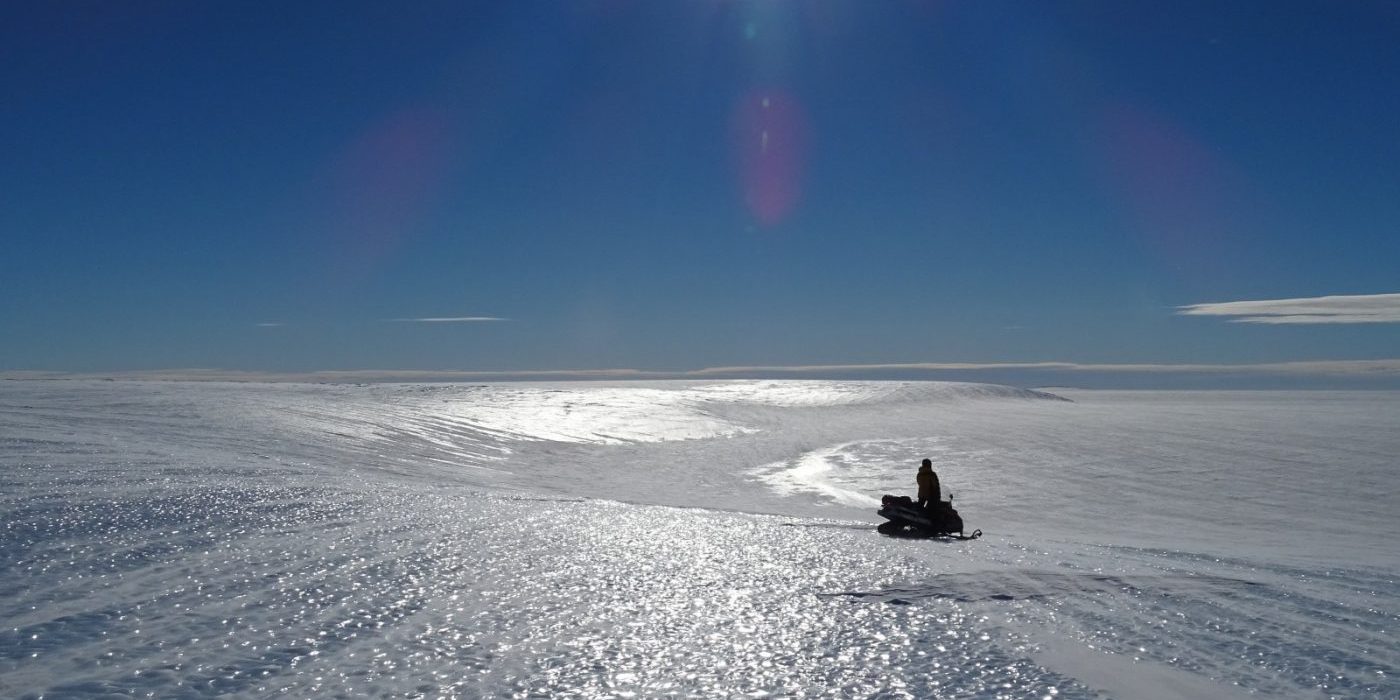Antarctica is a mysterious place for so many reasons. There is really no shortage of mystic to this very recent found continent. Humanity knowns very little about Antarctica. A place larger than Europe or United States and Mexico combined. Not owned by anybody, not well researched, at least not known to mainstream media and people in general. It truly a place of wonder and the last frontier to man. A place of interest for meteorites. Yes, Antarctica is showered over millennia with meteorites. Researchers from Delft University of Technology in The Netherlands have used artificial intelligence to create a type of treasure map to identify zones where meteorites can be found with high probability. Antarctic meteorite showers cover Antarctica and the frozen landscape.
Based on the study, the scientists calculate that more than 300,000 meteorites are out there on the Antarctic landscape, just waiting to be found. Some of course more difficult than others due to location and conditions. Yet, this represents enormous scientific potential.
Rocks from space have been accumulating in Antarctica for millennia, preserved in the continent’s cold, desert-like climate. Meteorites fall and become embedded in ice sheets of various thickness within the continent’s interior. As the glaciers slowly flow, the meteorites are carried with them. If a glacier runs up against a large obstacle, such as mountains, the ice rises and meteorites are brought to the surface.
Furthermore, dry Antarctic winds gradually erode the ice, exposing the meteorites. As more ice rises to the surface, the process repeats repeatedly. Over time, a significant accumulation of meteorites builds up in this frozen desert. This makes it easier to spot them at times. Nearly two-thirds of all meteorites recovered on Earth originate in Antarctica. The cold, dry nature of the frozen continent helps preserve these extraterrestrial rocks, and the dark colors of these stones make them stand out against ice and snow.
Each November, a handful of scientists’ head to the plateau just south of the Trans-Antarctic mountains and spend around six weeks picking up meteorites. The researchers don’t face the same struggles of the first Antarctic explorers, but their time is not without hurdles. A quarter to a third of the days proves unsuitable for working due to high-speed winds or overcast lighting that blankets the features of the ground in uniform, flat white. The team also faces psychological challenges. Antarctica, at times, feels more isolating than space. This prompts some astronauts to join the group as part of their mental training for the International Space Station.
The Antarctic Search for Meteorites program (ANSMET) is a US-led field-based science project that recovers meteorite specimens from Antarctica. Since 1976 they have recovered more than 22,000 specimens from meteorite stranding surfaces along the Transantarctic Mountains. These specimens are a reliable, continuous source of new, non-microscopic extraterrestrial material and support thousands of scientists from around the globe as they seek essential “ground-truth” concerning the materials that make up the asteroids, planets, and other bodies of our solar system. Antarctic meteorite showers cover Antarctica. It is only one of many interesting and mysterious things about this continent. Have you read any of Daniel River’s books yet? He writes fiction thrillers and mysteries about Antarctica. Arctic Ave or Arctic Record are two of his thrillers, which include the icy continent Antarctica.

Antarctica meteorite showers zone






